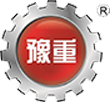Henan Zhonggong Group Helped CEEC Project Creating a Number of World Records
No. 6, Crane Industrial Park, Changyuan Town, Xinxiang City, Henan Province, China

Henan Zhonggong Group
Henan Tosta Machinery Co., Ltd.
Gantry Crane
Overhead Crane
Light Crane
Port & Container Crane
Launching Gantry Crane
Hoist & Crane Trolley
Crane Components
Electric Winch Overview
EOT Crane
The electrical part of the overhead crane hoist mainly includes the motors, braking electromagnets, operating electrical appliances, and protection electrical appliances of each mechanism. It is the control system that directs the work of each mechanism of the overhead crane hoist.
1. Characteristics of the motor used in the hoist crane
(1) It operates repeatedly for a short time and is commonly used three-phase asynchronous motor. Its reference power-on duration rate is 25%.
(2) It can start frequently, brake and reverse. In order to reduce the inertia of starting and stopping, the rotor is generally slender (small rotational inertia) to obtain a shorter starting time and less starting loss.
(3) It often overloads, and the initial starting torque multiple of the motor of the bridge crane is large.
(4) It can withstand frequent mechanical vibration and impact, and has high mechanical strength.
(5) The working environment is dusty, so its protective cover is the closed type.
Therefore, the motor used in the hoist crane should have high mechanical strength and overload capacity, and should be able to withstand frequent mechanical shocks and vibrations. In addition, due to its small rotationa inertia, it is suitable for quick starting, operating, etc.
There are two types of motors used on hoist cranes: AC and DC motors. AC asynchronous motors are divided into two types: cage type and winding type.
According to the excitation mode, DC motors are divided into four types: series excitation, compound excitation, shunt excitation, and separate excitation. The cage type motor is limited to the occasions with small and medium capacity (below 22kW), few starting times, no adjustment requirements, low requirements on starting smoothness, and simple operation.
However, the winding type motor can improve the starting performance of the motor of the overhead crane hoist after the rotor winding is connected to the appropriate additional resistance (the starting torque is increased and the starting current is reduced), or it can be used to adjust the speed of the motor. So it is widely used in the hoist crane.
Compared with asynchronous motors, DC motors have uniform and economical speed regulation, and have the advantages of good starting performance (good balance, fast starting), less damage, high productivity, and greater overload capacity.
However, because the overhead crane hoist has complex system (large volume, large weight, and large inertia), DC power supply and other additional equipment are required, and the price is expensive. Therefore, they are rarely used. They are generally used in occasions with high requirements and large capacity.
There are many series of asynchronous motors with different characteristics and uses. The asynchronous motors commonly used in the hoist crane belong to lifting and metallurgical motors. At present, there are mainly two series of YZR and YZ (JZR, JZ, JZR2, JZ2, J2RB, and Jzb series are old products, which are now out of use). Among them, the YZR series are winding type motors, while YZ series is cage type motors.
There is a nameplate on the shell of each motor, and the nameplate indicates the main technical data of the motor for reference during its use and maintenance.
1. The model of the motor
2. The power is expressed in kW and represented by the symbol P.
3. The unit of voltage is V, which refers to the line voltage that should be added when the electronic three-phase winding is working normally.
There are usually two voltages on the nameplate, which correspond to the connection method. For example, "380V/220V, Y/" means that when the power supply voltage is 380V, the stator winding should be connected to the star type(Y); when the power supply voltage of the overhead hoist crane is 220V, the stator winding shall be connected into a triangle.
4. Current or rated current, expressed as I, refers to the line current drawn from the power supply by the stator winding when the motor outputs rated power.
5. It includes the rotational speed of the rotor at full load.
6. Its operating power frequency is 50Hz.